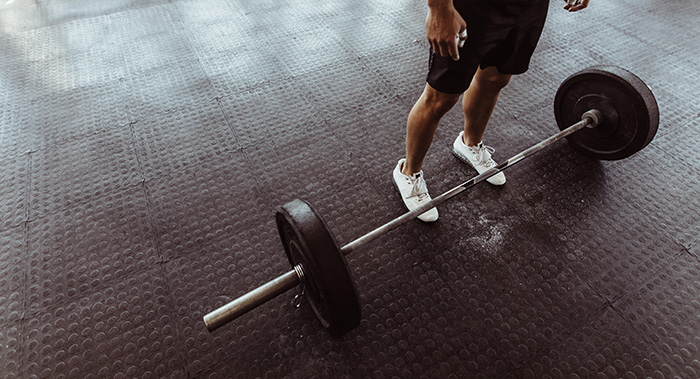How to do the barbell row to build a bigger back
Do the bent-over barbell row to build a bigger, stronger and broader back to start building the athletic and impressive physique you want, says New Body Plan’s Joe Warner
People who get results see exercises as training tools. They pick the right tool for the right job. And when you want to build a bigger, stronger and broader back, one of the very best tools to get the job done is the bent-over barbell row.
It’s a more advanced and challenging lift than the seated cable row machine, so use our expert guide to this important big compound lift to get the impressive physique you want!
The best back and bicep workout to add muscle size and strength
Find your perfect fat-loss plan!
Take the New Body quiz!
What is a barbell row?
The barbell row is a compound (multi-joint) exercise performed with a barbell. You hinge at the hips with the bar hanging down then you row it up to your stomach.
How will the bent-over row improve my physique?
If we’re looking at all the barbell row muscles worked, the biggest one is the latissimus dorsi. More specifically, it is worked in a horizontal pull movement. That means when you do the bent-over row, you’re most likely to see an improvement in back thickness. You will however see all-round back development gains as well as an increase biceps size.
What muscles are worked by the barbell row?
The barbell row is primarily a back exercise. So the key barbell row muscles worked are all in the back. They are:
Latissimus dorsi
This is the big back muscle that gives your back its width and thickness. When you perform vertical pulling movements, such as a pull-up, that develops width in the muscle. When you do horizontal pulls, such as the barbell row, that contributes to back thickness.
Trapezius
This is the muscle at the top of the back and is also known as the traps. When it is really well developed it looks like someone has a coat hanger down the back of their T-shirt. It is primarily worked when you shrug your shoulders. Basically, the higher up your body you pull the bar, the more you bring your traps into play. The same goes for the more upright you are when you row the bar.
Rhomboids
Of all the key barbell row muscles worked, this is the hardest to notice. It is much smaller than the lats and it sits below the traps. It is primarily involved in moving the scapular.
Barbell row: the secondary muscles worked
The barbell row also hits other muscle groups, including:
Biceps
When you row the bar your arms go from being straight to being bent at the elbow. That movement will recruit your biceps. If you want to make the barbell row even more effective for building biceps, use a reverse grip. This is where you start with your palms facing up, rather than down in an overhand grip.
Core
Your core muscles need to work to stabilise your spine. If you’re loose in the core, you risk your spine bending forwards. That will put stress on your lower back. So it is important to keep your core braced throughout the barbell row set. Of all the barbell row muscles worked, your core is arguably the most important because it will help to keep you injury free.
How to do the barbell row
We’ve looked in detail at all of the key barbell row muscles worked. Now let’s look at how to execute the move with perfect form.
• Hold a barbell with an overhand grip with hands just wider than shoulder width apart.
• Hinge at the hips to send the bar down the front of your thighs.
• Make sure your weight is on your heels and mid-foot and not the balls of your feet or your toes.
• You know you’re in a good start position when you feel a stretch in your hamstrings.
• Leading with your elbows, row the bar up to your stomach.
• Pause at the top and squeeze your shoulder blades together then lower slowly under control.
• Make sure the bar stays close to your thighs for the duration of the rep.
Find your perfect fat-loss plan!
Take the New Body quiz!
Train for your body type for your ultimate body transformation

